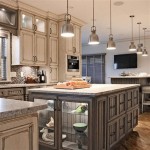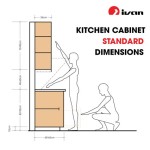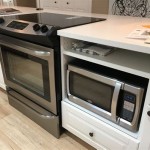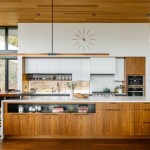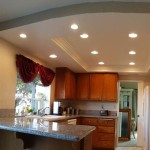Illuminating Your Culinary Space: A Guide to Light Over Sink in Kitchen
The kitchen is often considered the heart of the home, and within the kitchen, the sink area is a frequently used and vital workspace. Adequate lighting in this area is not merely an aesthetic choice; it significantly impacts safety, efficiency, and overall kitchen functionality. The placement and type of light over the kitchen sink play a crucial role in preventing accidents, facilitating tasks like washing dishes and prepping food, and enhancing the visual appeal of the space.
Numerous options exist for illuminating the sink area, ranging from traditional fixtures to modern designs incorporating LED technology. Selecting the appropriate light fixture requires careful consideration of several factors, including the kitchen's overall design, the existing light sources, the size of the sink area, and the desired level of brightness. A well-lit sink area not only improves functionality but also contributes to a more pleasant and inviting kitchen environment.
Key Point 1: Importance of Task Lighting at the Kitchen Sink
The primary purpose of light over the sink is to provide task lighting. Task lighting focuses illumination on a specific area to facilitate visual tasks. At the kitchen sink, this is particularly important because activities often involve sharp objects, hot water, and the need for precise hand movements. Insufficient lighting can lead to errors, accidents, and eye strain.
Effective task lighting eliminates shadows and glare, ensuring a clear view of the sink and surrounding workspace. This allows for safer and more efficient food preparation, dishwashing, and general cleaning. By properly illuminating the sink area, homeowners can minimize the risk of cuts, burns, and other common kitchen injuries. Furthermore, adequate lighting reduces eye fatigue, making kitchen tasks more comfortable and enjoyable, especially during low-light conditions or at night.
The specific level of brightness required for task lighting at the kitchen sink depends on individual preferences and the nature of the tasks being performed. However, a general guideline is to aim for at least 70-80 lumens per square foot. This level of illumination provides sufficient light for most kitchen activities without being overly harsh or glaring. Using a dimmer switch can allow for adjusting the brightness as needed, providing flexibility for different tasks and times of day.
Key Point 2: Types of Light Fixtures Suitable for Over the Sink
Selecting the right type of light fixture is crucial for achieving optimal illumination at the kitchen sink. Several options are available, each with its own advantages and disadvantages. Factors to consider when choosing a fixture include the kitchen's style, the height of the ceiling, the desired aesthetic, and the specific lighting needs.
Recessed lighting is a popular choice for over the sink due to its streamlined appearance and ability to provide focused light. Recessed lights are installed directly into the ceiling, creating a clean and unobtrusive look. They are available in various sizes and styles, allowing for customization to match the kitchen's décor. When using recessed lighting, it's important to choose fixtures with a narrow beam spread to concentrate the light directly over the sink area. Dimmable recessed lights offer added flexibility, allowing for adjusting the brightness as needed.
Pendant lights are another common option for over the sink. These fixtures hang from the ceiling and can add a decorative touch to the kitchen. Pendant lights are available in a wide range of styles, from simple and modern to ornate and traditional. When choosing pendant lights, it's important to consider the height of the ceiling and the size of the sink area. The pendant should be hung at a height that provides adequate light without obstructing the view or interfering with kitchen tasks. Multiple small pendant lights can also be used to create a more balanced and even illumination.
Under-cabinet lighting can also be used in conjunction with other fixtures, such as recessed or pendant lights, to provide additional illumination to the countertop area around the sink. These lights are typically installed beneath the upper cabinets, providing direct light to the workspace. Under-cabinet lighting is particularly useful for tasks like chopping vegetables or washing dishes, as it eliminates shadows and provides a clear view of the work surface. LED strip lights are a popular choice for under-cabinet lighting due to their energy efficiency, long lifespan, and ease of installation.
Track lighting offers a flexible and versatile lighting solution for the kitchen sink area. Track lights consist of a series of adjustable light heads that are mounted on a track. This allows for directing the light to specific areas of the sink, providing focused illumination where it's needed most. Track lighting is available in various styles and finishes, making it easy to coordinate with the kitchen's décor. The adjustable heads can be repositioned as needed, making track lighting a practical choice for kitchens with changing lighting needs.
Key Point 3: Considerations for Light Bulb Selection and Placement
The type of light bulb used in the fixture is just as important as the fixture itself. Light bulbs vary in terms of brightness, color temperature, and energy efficiency. Choosing the right bulb can significantly impact the overall lighting quality and energy consumption of the kitchen.
LED bulbs are the most energy-efficient option available, consuming significantly less energy than incandescent or halogen bulbs. They also have a much longer lifespan, reducing the need for frequent replacements. LED bulbs are available in various color temperatures, ranging from warm (yellowish) to cool (bluish). For the kitchen sink area, a neutral white or cool white color temperature is generally recommended, as it provides a clear and bright light that is ideal for task lighting. The color rendering index (CRI) is also an important factor to consider. A high CRI indicates that the bulb accurately renders colors, which is particularly important for food preparation.
Halogen bulbs provide a bright and crisp light, similar to natural daylight. They are more energy-efficient than incandescent bulbs but less efficient than LED bulbs. Halogen bulbs also tend to generate more heat, which can be a concern in small spaces. They are available in various shapes and sizes, making them suitable for a wide range of fixtures. When using halogen bulbs, it's important to avoid touching the bulb with bare hands, as this can shorten its lifespan. The oils from the skin can create hotspots on the bulb's surface, causing it to burn out prematurely.
Incandescent bulbs are the least energy-efficient option and are being phased out in many countries due to their high energy consumption. They produce a warm and inviting light, but they also generate a lot of heat. Incandescent bulbs have a relatively short lifespan compared to LED and halogen bulbs. While they are still available, they are generally not recommended for kitchen lighting due to their inefficiency and short lifespan.
Proper placement of the light fixture is essential for achieving optimal illumination at the kitchen sink. The fixture should be positioned directly above the sink area to provide focused light. If using recessed lighting, multiple fixtures may be needed to ensure even illumination. When using pendant lights, the fixture should be hung at a height that provides adequate light without obstructing the view or interfering with kitchen tasks. Adjustable fixtures, such as track lights, offer the flexibility to direct the light to specific areas of the sink as needed.
In addition to the main light fixture, consider adding supplemental lighting to enhance the overall lighting scheme. Under-cabinet lighting is a great way to illuminate the countertop area around the sink, providing additional light for tasks like chopping vegetables or washing dishes. A small desk lamp can also be placed on the countertop to provide targeted light for specific tasks. Layering different types of lighting creates a more balanced and versatile lighting scheme that can be adjusted to suit different needs and preferences.
Dimmers are a valuable addition to kitchen sink lighting, allowing for adjusting the brightness as needed. This is particularly useful for creating a more relaxing atmosphere during the evening or for reducing glare during the day. Dimmers can be installed on most types of light fixtures, including recessed lights, pendant lights, and track lights. It's important to choose a dimmer that is compatible with the type of light bulb being used. LED dimmers are specifically designed to work with LED bulbs, ensuring smooth and flicker-free dimming.
Finally, consider the overall style of the kitchen when choosing a light fixture. The fixture should complement the kitchen's décor and enhance its aesthetic appeal. A modern kitchen may benefit from sleek and minimalist fixtures, while a traditional kitchen may call for more ornate and decorative designs. The finish of the fixture should also coordinate with the other hardware and fixtures in the kitchen. A cohesive and well-coordinated lighting scheme can significantly enhance the overall look and feel of the kitchen.

Wall Mount Light Over 2024 Kitchen Sink

Lighting Over Kitchen Sink Design Ideas

Choosing The Best Light Over Your Kitchen Sink Steel Lighting Co

Sink Wall

Install A Sconce Light Above The Kitchen Sink Tylynn M

Over Kitchen Sink Lighting How To Enlighten Your Cooking Space

Favorite Flush Mount Light Fixtures And New Sink Nesting With Grace

Pendant Over The Kitchen Sink Yay Or Nay Plotted Lights

How To Light Up The Kitchen Sink With Style Inspiration Barn Electric

35 Over Kitchen Sink Lighting Ideas That Go Beyond Pot Lights

